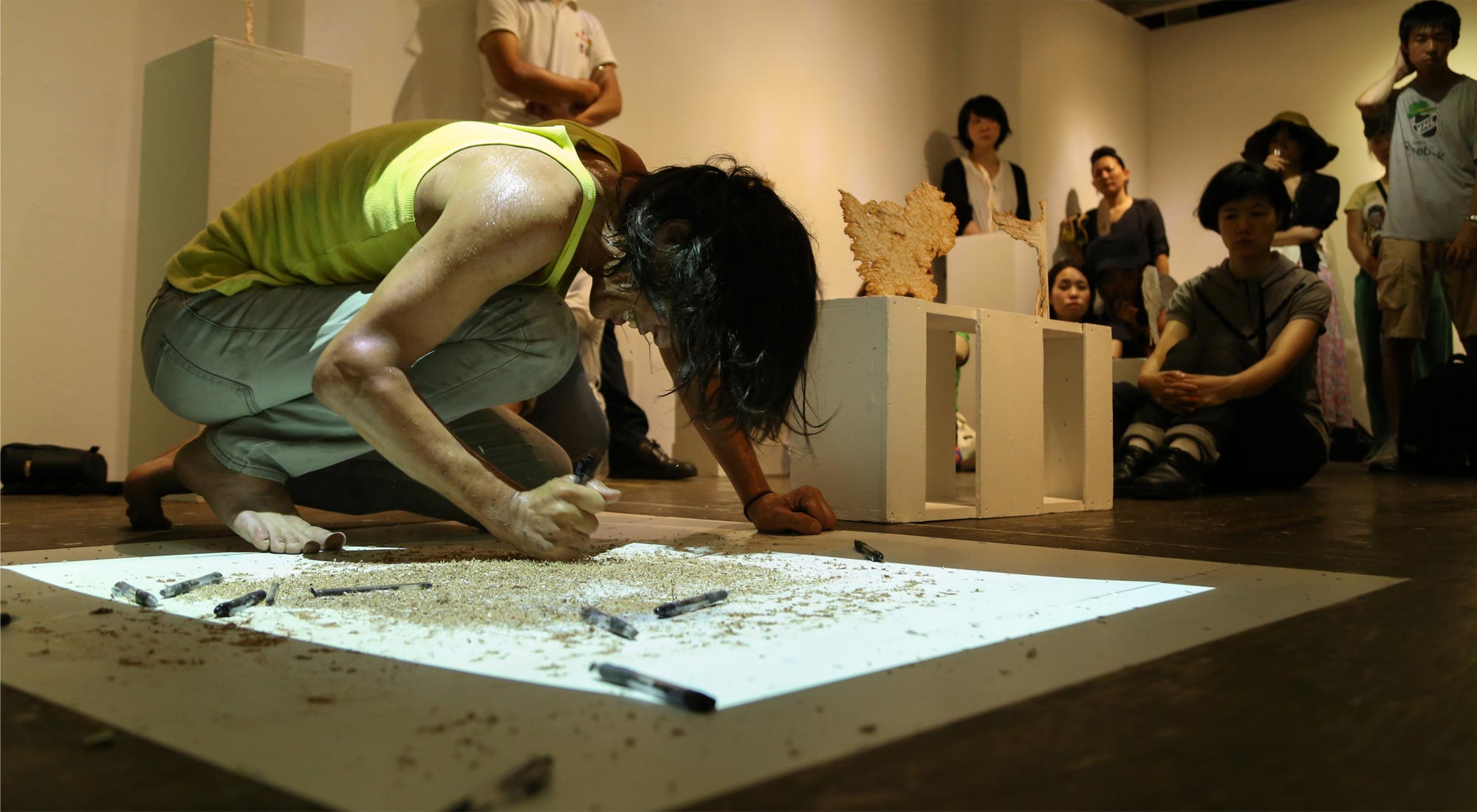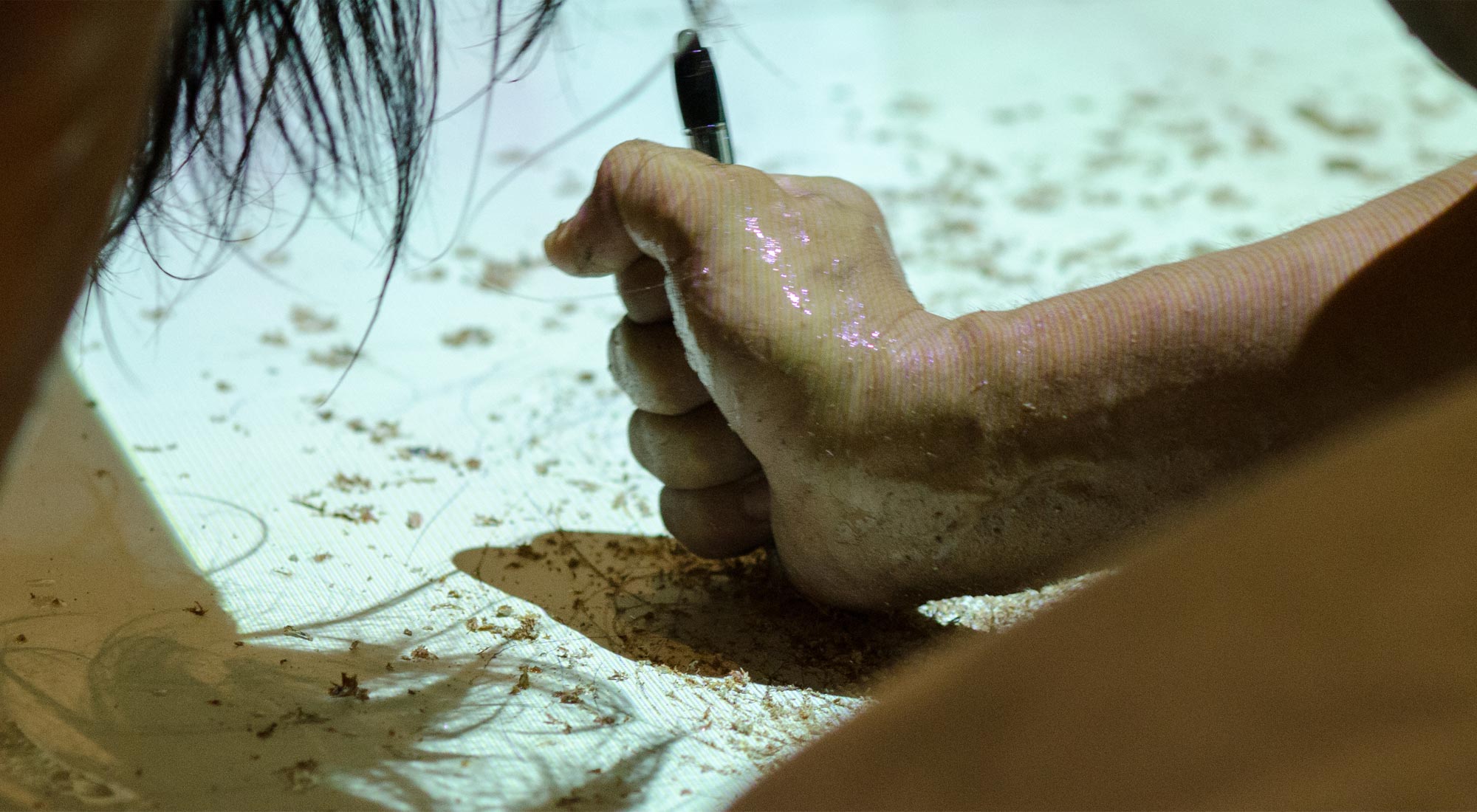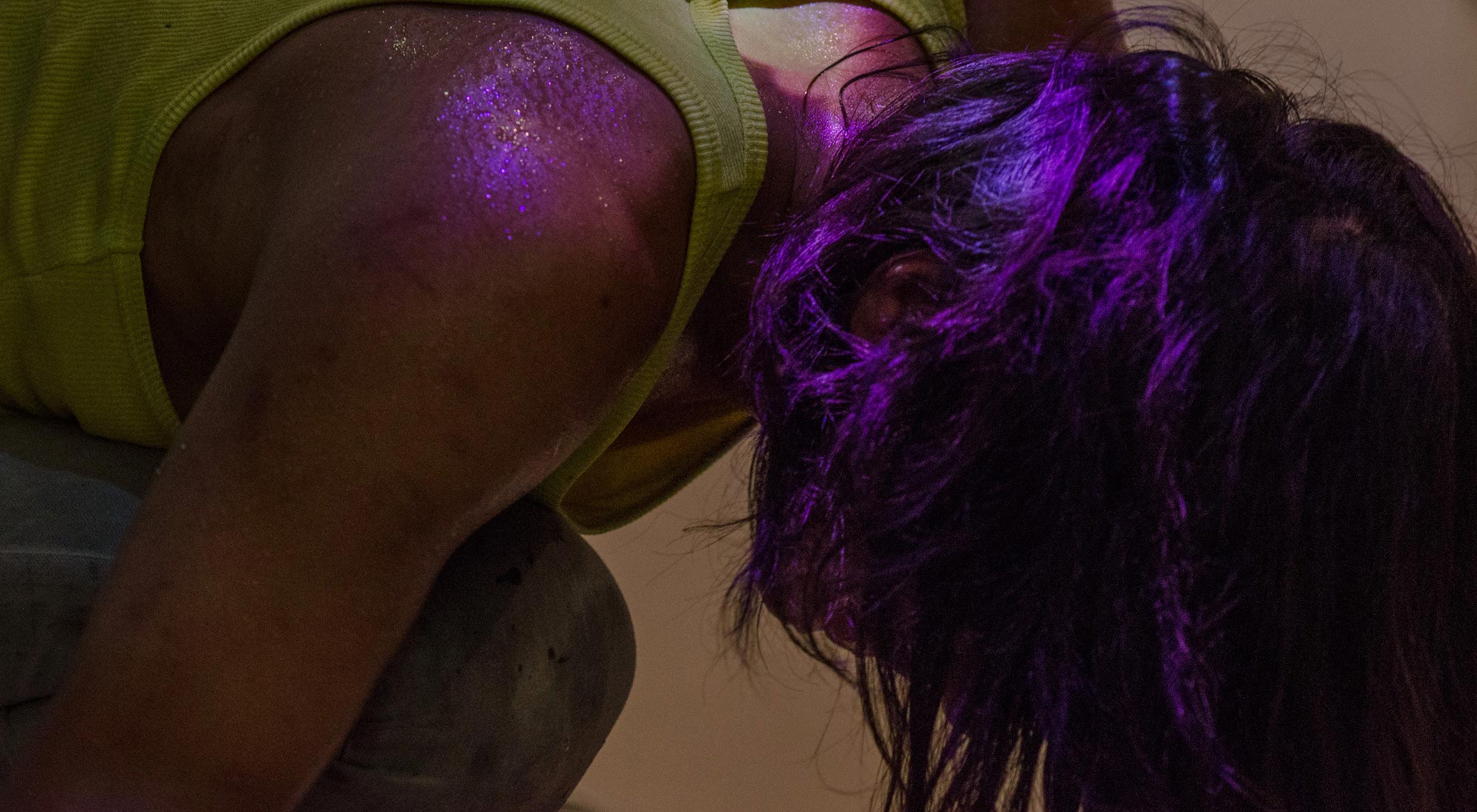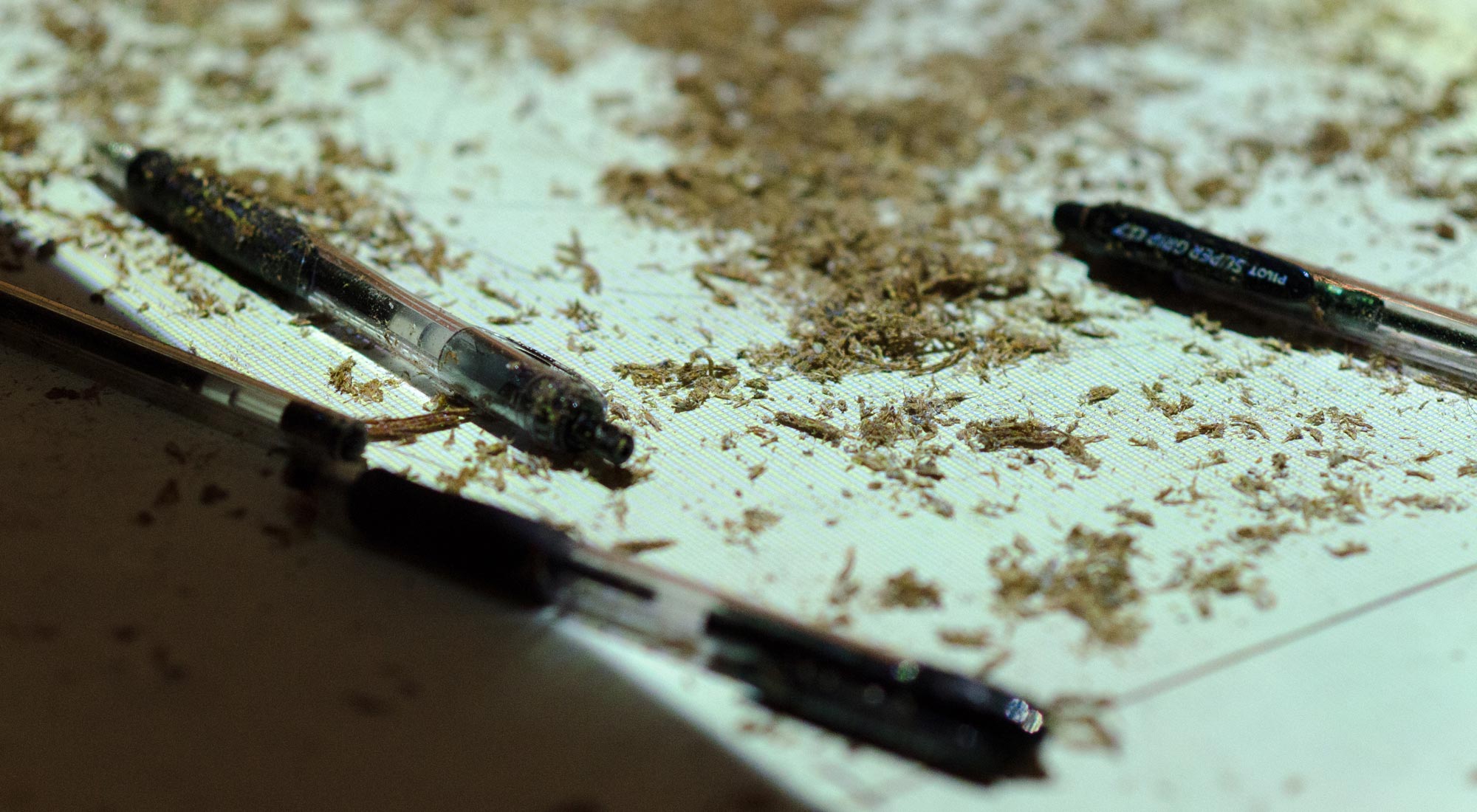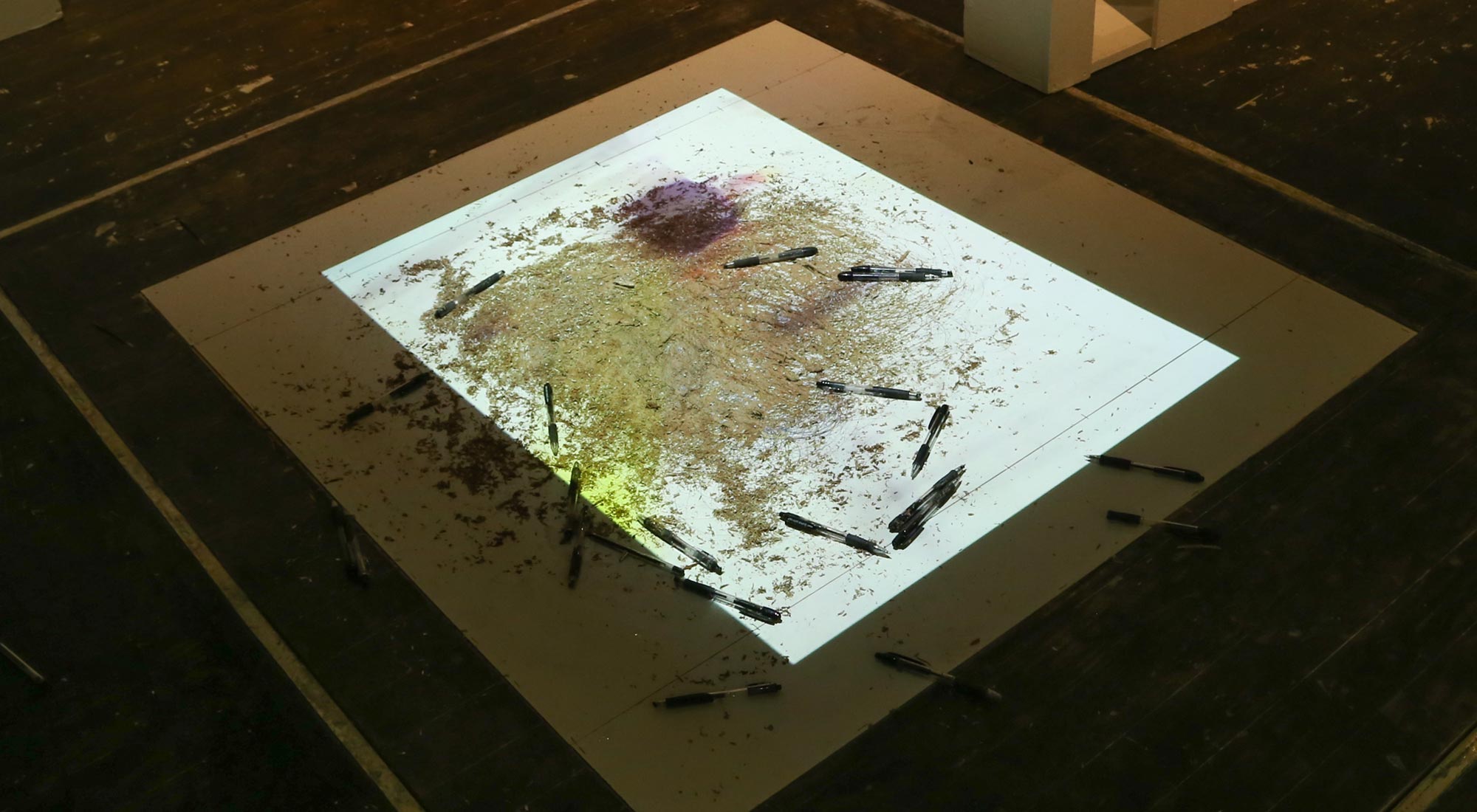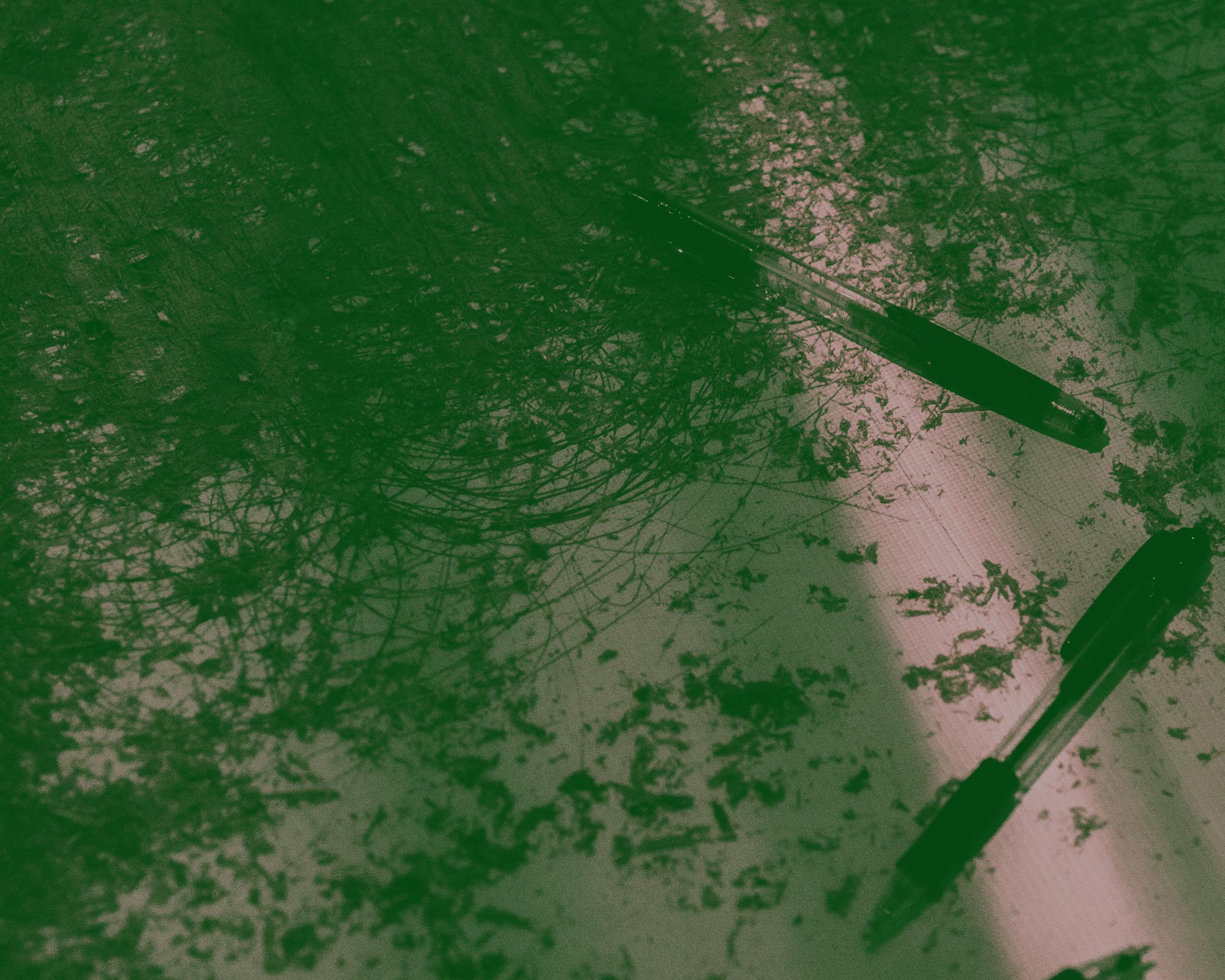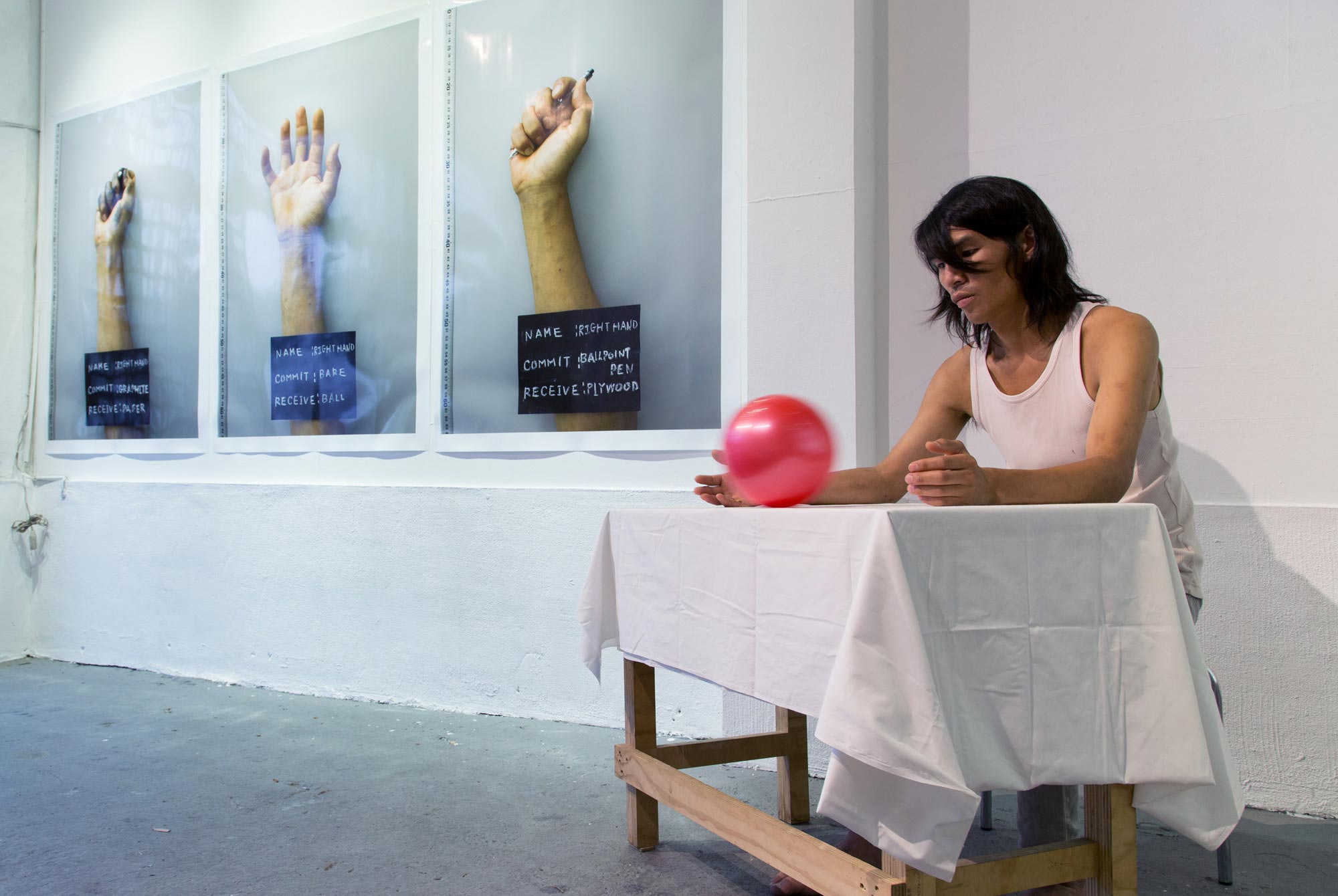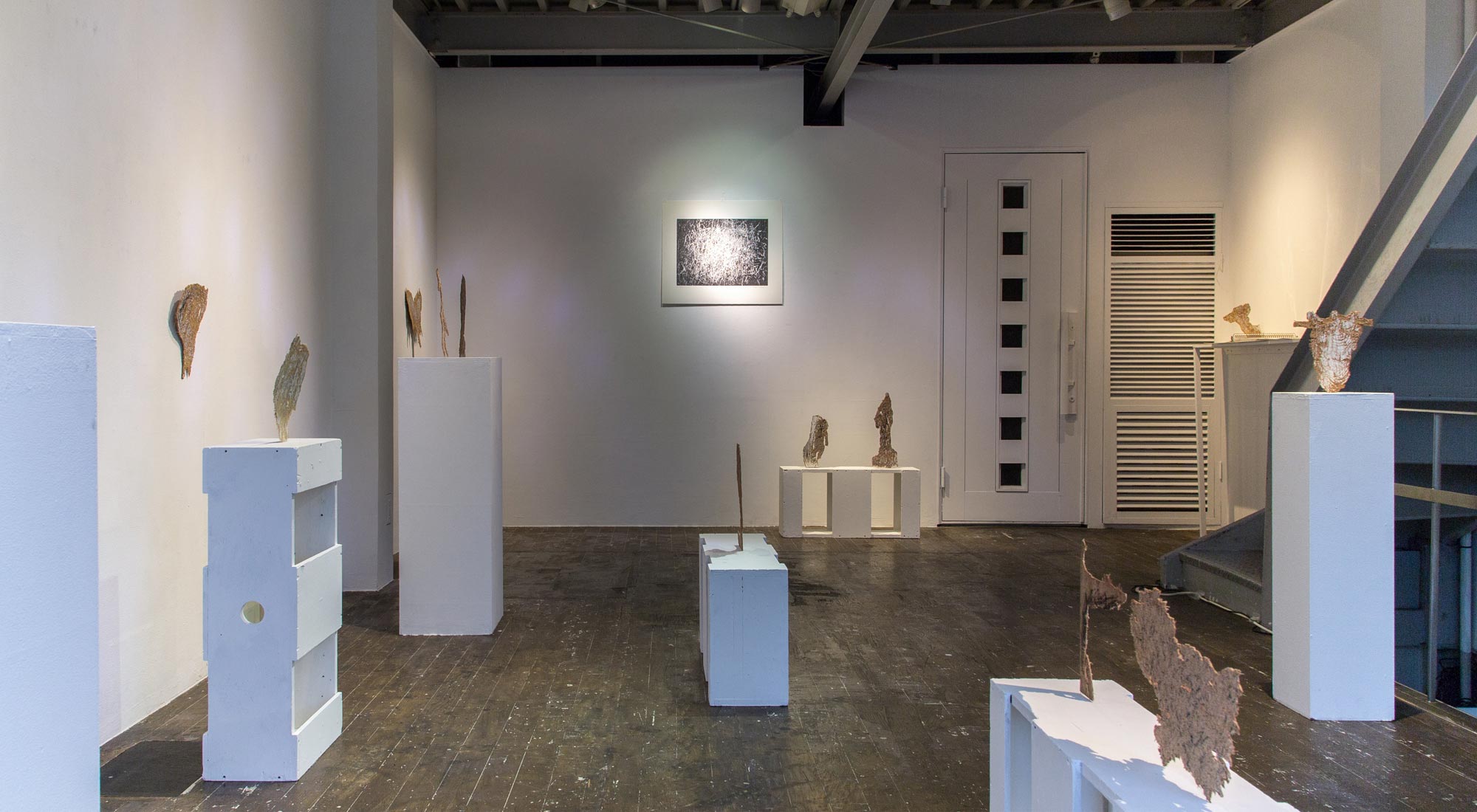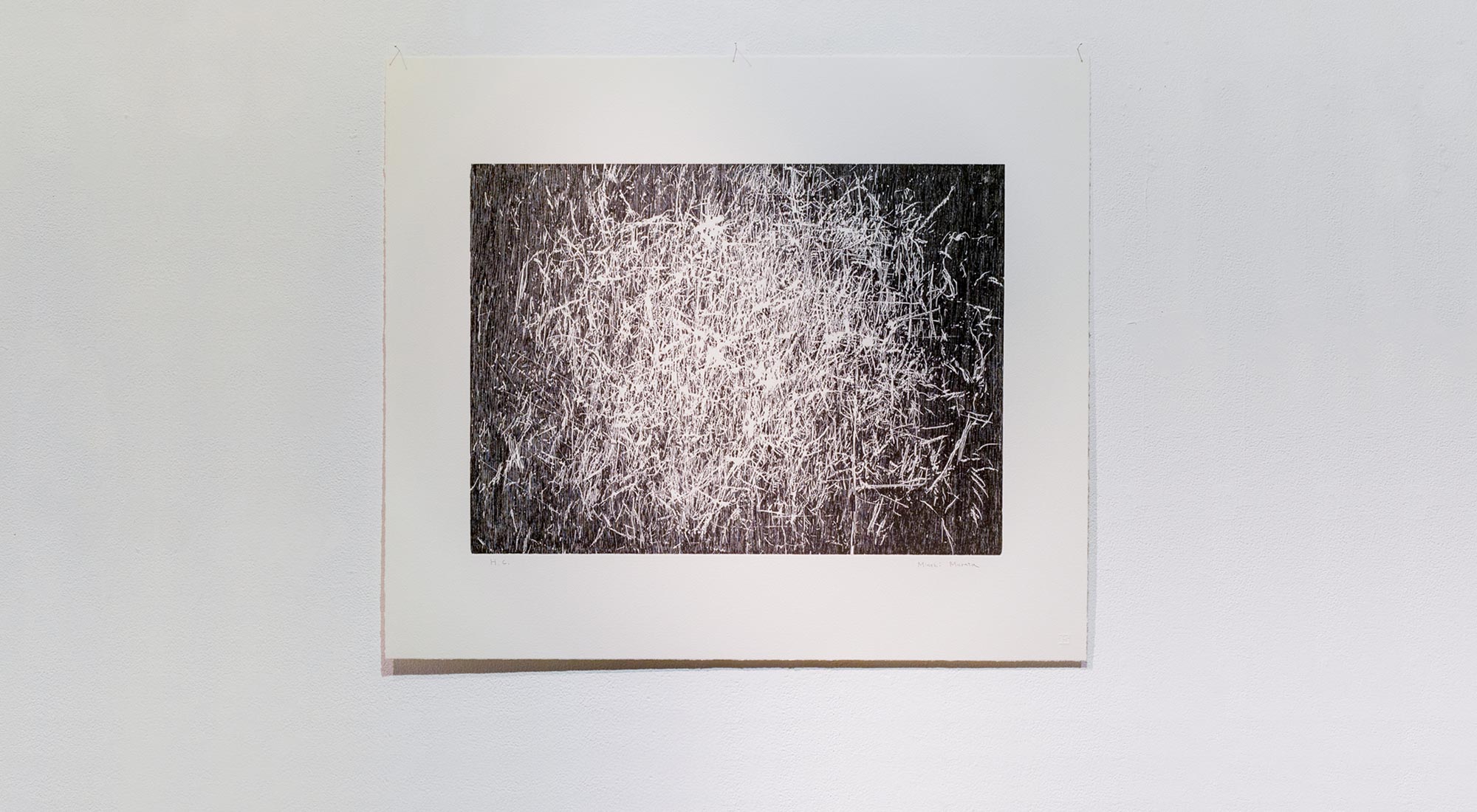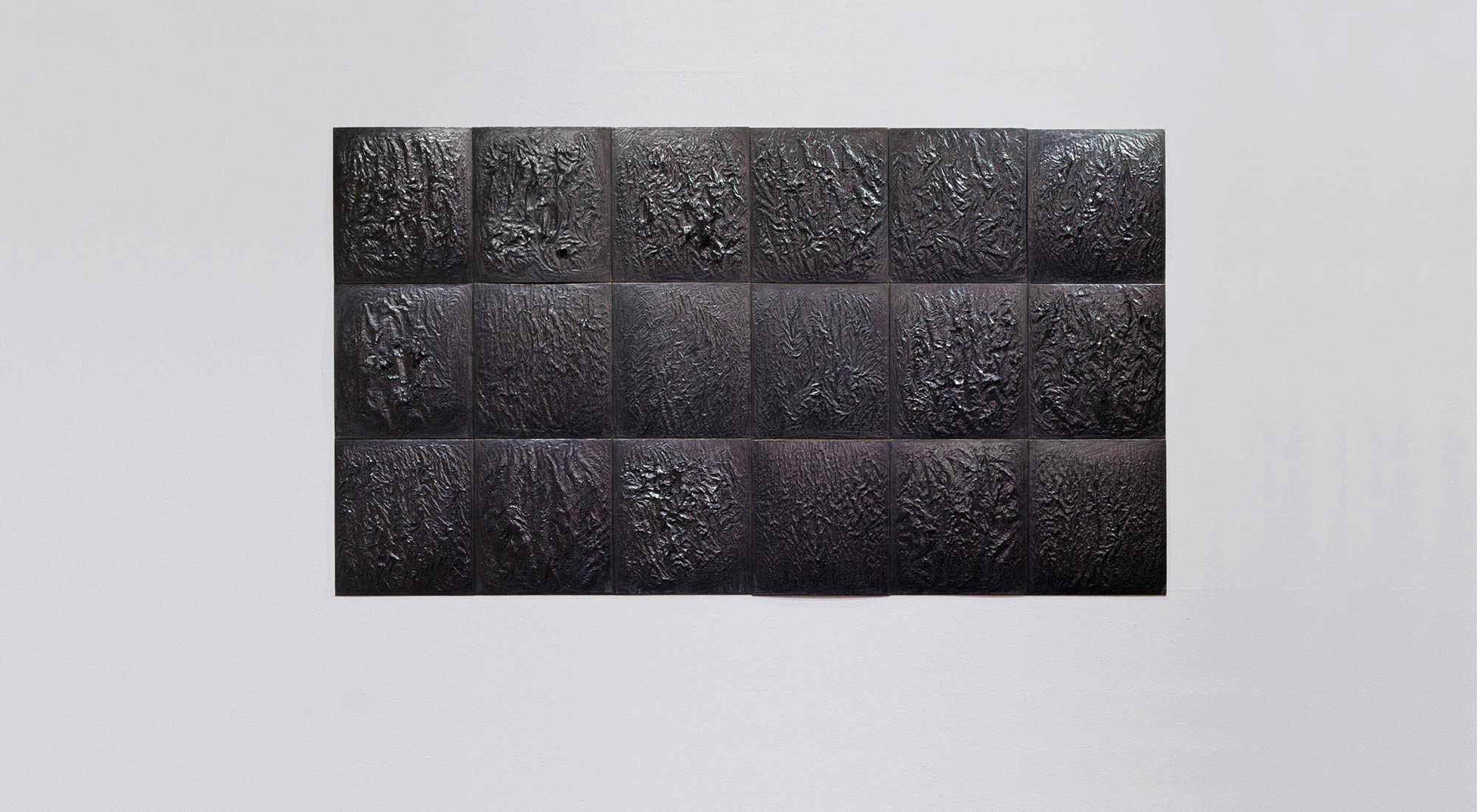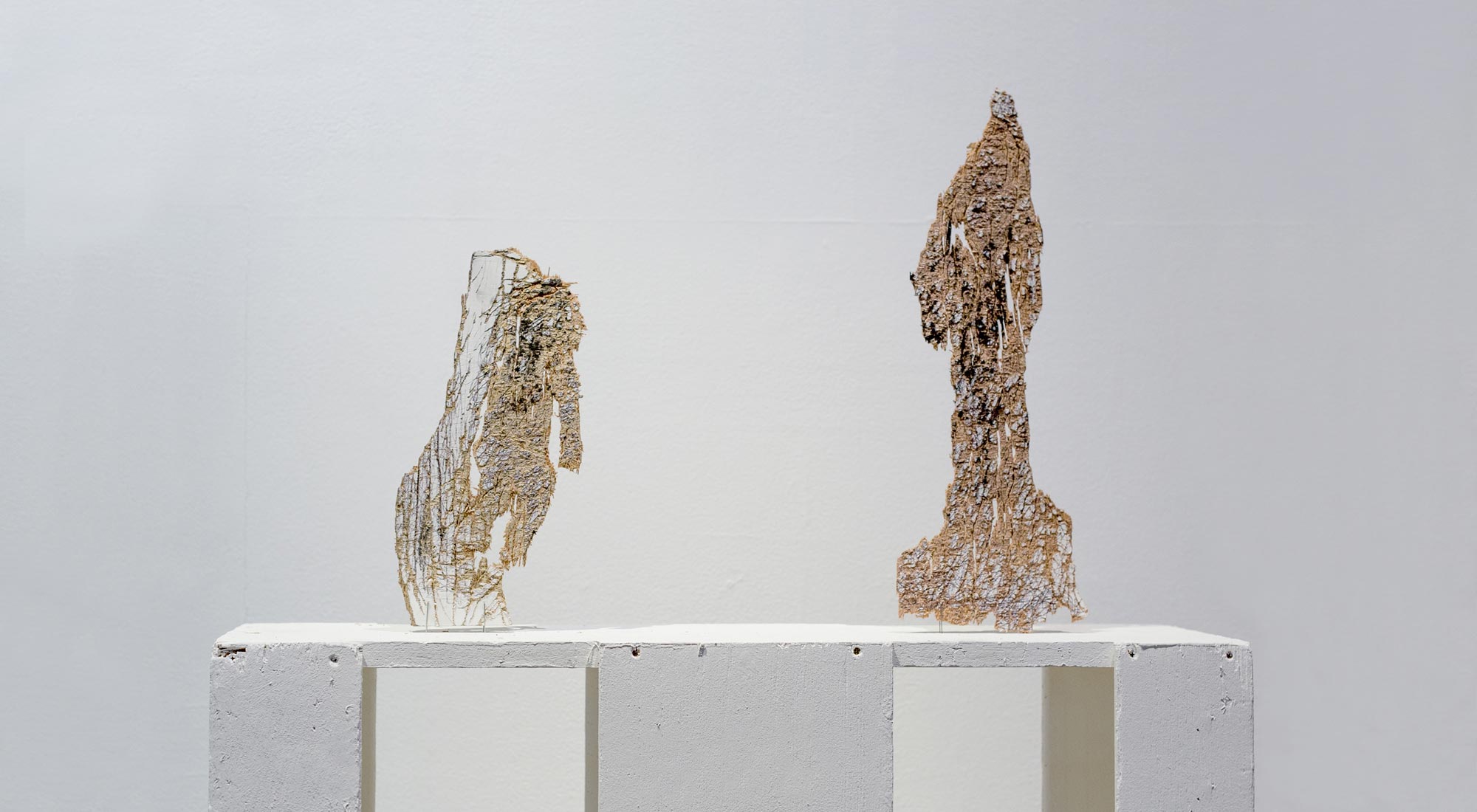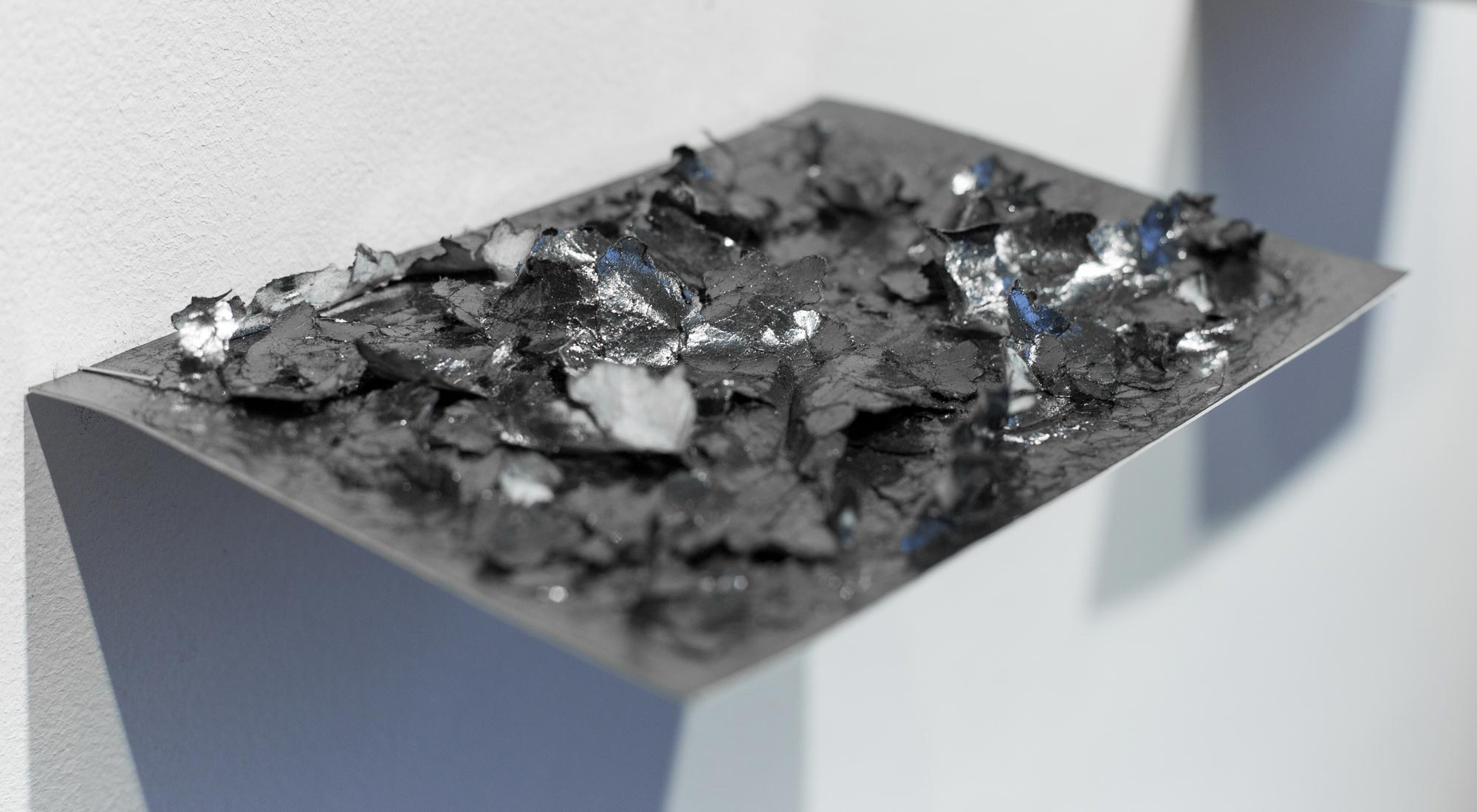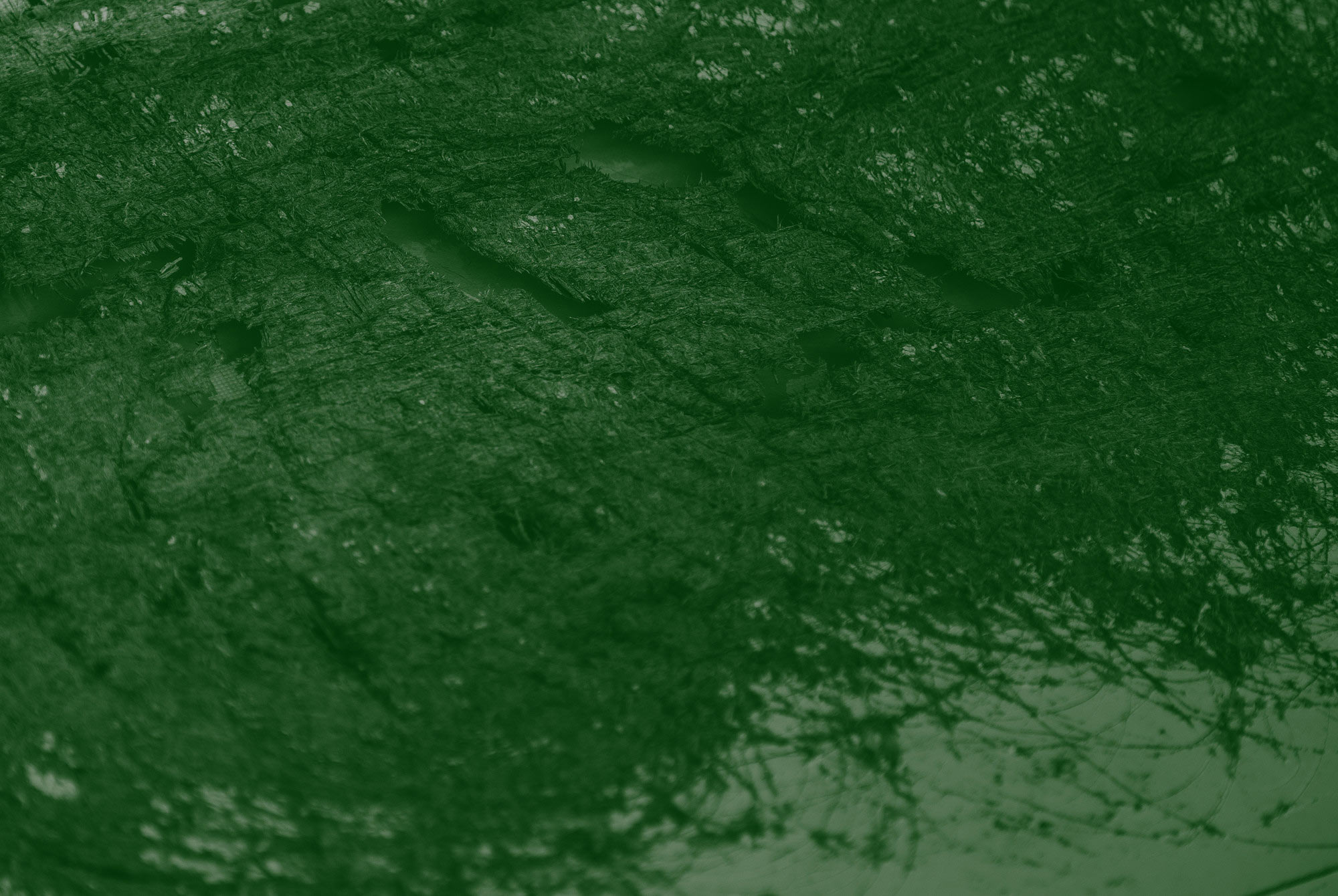村田峰紀の体操 O JUN
なんと過剰な身体だろう。彫刻をする身体、描く身体、詩を吐く身体、唸る身体、労働する身体、思惟する身体、佇む身体、笑う身体。村田峰紀の身体は多忙だ。いや、そもそも人の身体は忙しい。思惟的で意図的で動的で静的で自由で不自由で、誰もがその重い体をゆっくりとあるときは電光石火のごとくとにかく休むことなく忙しなく運んでいるのだ。そしてそのような酷使を日々私たちに強いる敵は、重力なのだ。
村田峰紀は個展の初日、ギャラリーの二階の床にベニヤ板を敷いた。ベニヤ板の下は真四角に抜かれていている。この建物がギャラリーになる前の造りで、床を抜いて荷の上げ下ろしの便宜を図るためなのだろうか。その上に乗って村田峰紀はまだ満足に箸使いの出来ない子供のような持ち方でボールペンを握る。その腕を大きく上下左右に行き来させ線描きを重ねる。筆圧の強さはボールペンの先端部をすぐにダメにする。何本も取り替えて描いてゆく。途中から音が聞こえ始める。その音は次第に大きくなる。村田峰紀の口から洩れる音だ。読経のようにも蝉の鳴き声のようにも聴こえるが、最近の流行に倣えばドローンの飛行音に近い。手振りと唸りは素直に直結して描きを駆動させる。線はひたすら引かれ重なりやがてその重なりによってできる線描の重なりとズレによって現れる無数の明るい空隙が、それもたちまちのうちに線によって潰されてゆく。そして一帯、鈍色の蒼黒い色面の中にベニヤがささくれだってのぞいている。そのささくれの中心はこじ開けられたように貫通している。穴は階下のフロアーにも開かれた。このありさまは村田峰紀の行為の果てに現れるのだが、私たちは、見過ごしてはならない、肝に銘じて忘れてはいけないことがある。それは、村田峰紀は自らの身体とその可動域をわずかな時間のなかで余すことなく使い切り、彼の体の真下に濃い陰翳を描き残したということ。陰翳は、見下ろす私たちの顔や体を燦々と照らしていたということ。ものの質量と運動と時間とが誤差なく通じたまっとうな成果を私たちが目の当たりにしたからだ。言い訳と飾りが毫もない。一つの無垢が重力に対して、つかの間反撃を試みた時間であった。これが、僥倖。
On Murata Mineki’s “Gymnastics” O JUN
Murata Mineki excessively uses his body. Specifically, he employs the body for sculptural production, the body for depiction, the body to utter a poem, the body that hums, the body for labor, the body to think, the body to stand still, and the body to laugh. Thus, Murata’s body is quite busy. Or rather, we could say that all human bodies are essentially busy. Our bodies have thoughts and intentions, but are also dynamic, static, unrestricted and restricted. All of us carry our own unceasingly busy and burdened bodies, which at times we move slowly, and other times, at a lightning speed. And our enemy that forces us to lead such a harsh daily life is indeed gravity. On the opening day of his solo exhibition, Murata placed a plywood board on the second floor of the gallery. The floor below the board had been cut out into a square hole. This hole was created before the building was used as a gallery; thus, it was likely cut out for the convenience of loading and unloading goods. On that board, Murata held a pen as if he were a child who could not properly use chopsticks. He then began to continuously overlay lines with a broad sweep of his arm that went back and forth in all directions. The heavy pressure he applied on the pen soon broke its tip. Hence, he kept changing to a new pen, and continued on with his depiction. At some point in the performance, a sound that began to be heard only slightly gradually grew louder. It came from Murata’s mouth. It sounded like the chanting of a sutra, or like chirping cicadas; or rather, if I may borrow from recent technologies, the sound was closer to that of a flying drone. His drawing was driven by the smooth merging of his hand movements and humming. Murata devotedly drew and overlaid lines, which in time came to manifest countless, bright openings created within the layers and gaps of the lines. But those openings were immediately smashed by new lines. In the end, the plywood developed countless splinters with tiny holes over the entire grayish blue-black color-field. The central parts of those splinters appeared as if they were pierced by force. Thus, those holes created openings to the floor below. This state was manifested as a result of Murata’s actions. But we should not overlook and never forget that he exhaustively utilized his own body and its movable range within a limited time, while also achieving to create dark shadings directly below his body. In addition, those shadings allowed us to feel as if they were shedding bright light upon our faces and bodies. This was possible because we witnessed the justified result of his actions in which a physical mass, movements and the passing of time perfectly merged. His actions made no excuses whatsoever, nor were they embellished in any way. Murata, seen as a solid mass, made a transient counterattack upon gravity. Therefore, we were very fortunate to be present at his performance.


